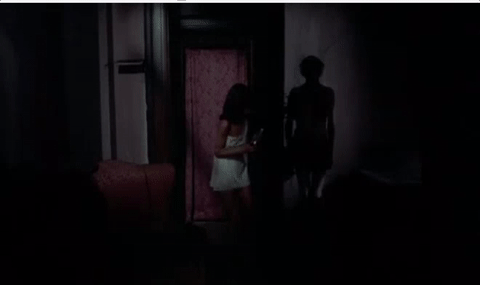Read: Parts One, Two & Three
SPOILERS!
27-The Killing 1956

Daring hold-up nets $2,000,000! Police baffled by fantastic crime! Masked bandit escapes with race track loot! These 5 Men Had a $2,000,000 Secret Until One of them told this Woman!Narrator – At exactly 3:45 on that Saturday afternoon in the last week of September, Marvin Unger was, perhaps, the only one among the hundred thousand people at the track who felt no thrill at the running of the fifth race. He was totally disinterested in horse racing and held a lifelong contempt for gambling. Nevertheless, he had a $5 win bet on every horse in the fifth race. He knew, of course, that this rather unique system of betting would more than likely result in a loss, but he didn’t care. For after all, he thought, what would the loss of twenty or thirty dollars mean in comparison to the vast sum of money ultimately at stake.
The Killing is an enigmatic tour de force directed by the fiercely independent Stanley Kubrick, who also penned the screenplay adapting its non-linear story structure from Lionel White’s novel ‘clean break.’ Kubrick chose Jim Thompson for the atypical style of writing in his pulp fiction books and had a great ear for dialect and an original approach to dialogue.
{about writer Jim Thompson} “At the time he was just another bitter alcoholic wordsmith living on paltry advances for paperback originals like Savage Night, The Grifters and The Killer Inside Me. Kubrick recognized his affinity for desperate characters and the great gallows humor in his dialogue. Thompson had a nasty falling out with Kubrick after Kubrick took a screenwriting credit, and reduced Thompson’s credit to merely – dialogue by…” (Eddie Muller)

Kirk Douglas and Stanley Kubrick on the set of Paths of Glory 1957.
Thompson and Kubrick came together two years later to collaborate on his break-out film Paths of Glory 1957. Working within the Hollywood system there would always be strings attached, initially, Kubrick and writer Thompson’s screenplay (Thompson was popular as a writer of hard-boiled paperback crime novels) did not include a narrator, but the studio insisted they use one in order to lessen the audience’s confusion.
Kubrick’s insistence on staying true to White’s novel and his style of writing made him bang heads with United Artists who were distributing the film. They thought they were getting an unambiguous film noir heist picture, not a rip-off story told in the middle of a time warp.

Kubrick cleverly disrupted the studio’s demand for a Narrator and only used Gilmore when the narrative became linear, making him an unreliable storyteller, which had the outcome he was looking for from the beginning which was – to confuse the audience.

When Kubrick turned in his final cut United was furious and insisted he restructures the film so it wouldn’t mess with the audience’s heads. After a bit of a debate, Kubrick held his ground and stuck with White’s vision. The result was rather than spending any more money editing the film, United Artists marooned it under the half of a double bill with Robert Mitchum’s western, Bandito directed by Richard Fleischer who made some interesting B noir/crime movies His Kind of Woman 1951 with Robert Mitchum, The Narrow Margin 1952, Compulsion 1959, Crack in the Mirror 1960, and The Boston Strangler 1968.














